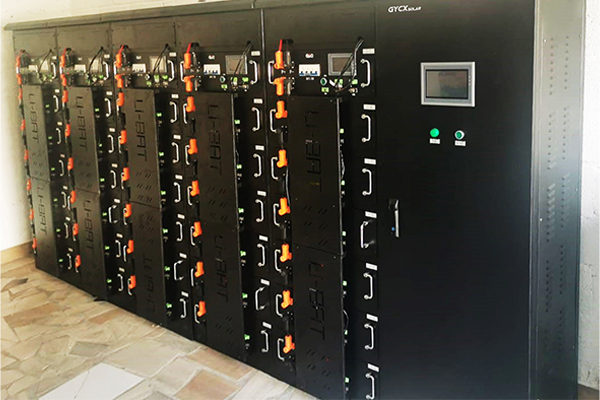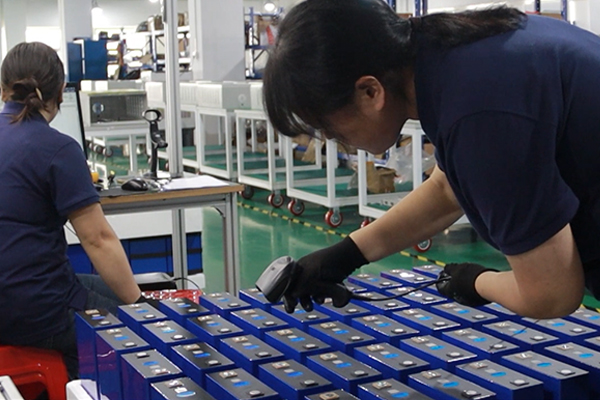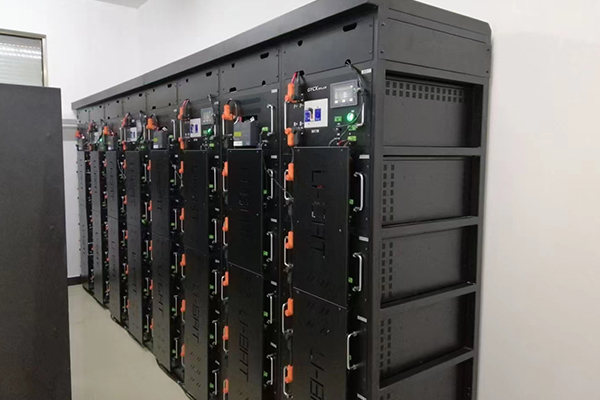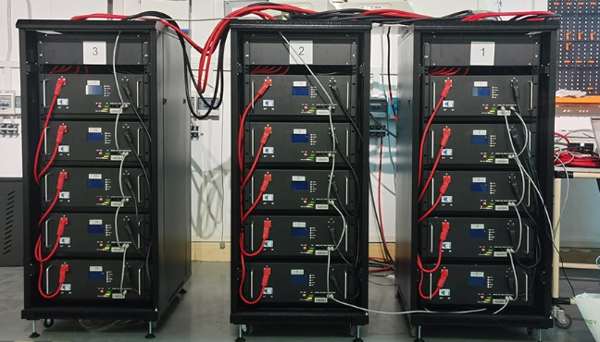What is a Server Rack Battery?
Are you looking to expand your solar energy system or install robust backup power for your home or business?
You might have heard the term "server rack battery" but are not quite sure what it means or if it’s the right fit for you. These compact, modular powerhouses are indeed changing the game for efficient energy storage, and we’re here to shed some light on them.
A server rack battery is essentially a high-performance lithium-ion battery, most commonly using Lithium Iron Phosphate (LFP) chemistry, that is specifically designed in a standardized "U" height (a unit of measure for rack-mounted equipment) to neatly fit into server racks or similar 19-inch wide enclosures. They offer a modular, scalable, and very space-efficient way to store energy. This makes them an ideal solution for modern solar energy systems, off-grid applications, and uninterruptible power supplies (UPS), almost always featuring an integrated Battery Management System (BMS) for safety and optimal performance.

At Gycx Solar, we often work with server rack batteries because they offer a clean, organized, and highly efficient way to store solar energy.
Their design allows for easy expansion and robust management, which is fantastic for customers looking for a future-proof energy solution. Let’s explore what makes these batteries tick and what you should consider.
What is a server rack battery?
Curious about the technology packed into these sleek, rack-mounted units? Want to understand how they differ from other battery forms and why they’re gaining traction, especially in solar energy storage? Let’s break down the key components and characteristics that define a server rack battery.
At its core, a server rack battery is an advanced energy storage unit. The vast majority today utilize Lithium Iron Phosphate (LFP or LiFePO₄) chemistry, prized for its exceptional safety, long cycle life, and thermal stability – all crucial for residential and commercial energy storage.
They are constructed to fit standard 19-inch wide server racks, with heights measured in "U"s (1U equals 1.75 inches; common sizes are 2U, 3U, or 4U per battery module). Each self-contained module houses an array of LFP cells, a sophisticated Battery Management System (BMS) that protects the cells and monitors their health, and communication ports (like CAN bus or RS485) allowing them to talk to inverters and other batteries in the system.

Dive Deeper: The Anatomy of a Rack-Mounted Powerhouse
Let’s look closer at what makes server rack batteries so effective for energy storage.
- Form Factor & Modularity: The standardized 19-inch width and "U" height system is a game-changer. It allows for battery modules to be neatly stacked in server cabinets or dedicated battery racks/enclosures. This not only looks clean and organized but also makes scaling your energy storage incredibly straightforward. Need more capacity down the line? In most cases, you can simply add more identical battery modules in parallel to your existing rack.
- Predominantly LFP Chemistry: As mentioned, LFP is the star here. Compared to other lithium-ion chemistries like NMC (Nickel Manganese Cobalt), LFP offers a much longer cycle life (thousands of cycles vs. hundreds for some NMC types in demanding applications), superior thermal stability (making it far less prone to thermal runaway or fire), and it doesn’t use cobalt, which has ethical sourcing concerns. For stationary storage like solar backup, where safety and longevity trump ultra-high energy density per kilogram, LFP is the winning choice. This is a key reason we at Gycx Solar champion LFP-based server rack batteries for our clients.
- Integrated Advanced BMS: The Battery Management System is the unsung hero. It’s an intelligent circuit board within each battery module that provides critical safety functions:
- Overcharge and over-discharge protection.
- Over-current and short-circuit protection.
- Over-temperature and under-temperature monitoring and protection.
- Cell balancing (ensuring all individual cells within the module maintain a similar state of charge, which is vital for LFP lifespan).
- Accurate State of Charge (SoC) and State of Health (SoH) reporting.
- Communication with compatible inverters for optimized charging and system performance.
- Applications: While the term "server rack" might suggest data centers (and they are indeed used there for UPS), these batteries are exceptionally well-suited for solar energy storage (both residential and commercial), off-grid power systems, and providing reliable backup power for critical loads. Their ability to be neatly organized and scaled makes them very versatile.
What are the best battery racks? (Interpreted as: What are the best server rack batteries?)
If you’re looking for top-tier server rack batteries for your energy system, you’ll want to ensure you’re investing in units that offer reliability, excellent performance, and uncompromising safety. While the "rack" or enclosure is important for housing them, the quality of the battery modules themselves is paramount. Not all rack batteries are created equal.
The "best" server rack batteries are characterized by their use of high-quality Grade A LFP cells, a robust and intelligent Battery Management System (BMS) capable of clear communication, a high cycle life (often quoted at 6,000 cycles or more at 80% Depth of Discharge – DoD), excellent usable capacity (high DoD), strong safety certifications (such as UL 1973 for the battery itself and UL 9540A for thermal runaway fire propagation testing), and proven compatibility with leading solar inverters.

Dive Deeper: Identifying Top-Quality Server Rack Batteries
When we at Gycx Solar evaluate server rack batteries, we look for several key indicators of quality and performance:
- Cell Quality & Chemistry: We primarily focus on Lithium Iron Phosphate (LFP) due to its superior safety and longevity. Within LFP, we look for manufacturers using Grade A prismatic cells from reputable cell suppliers, as these form the foundation of a reliable battery.
- Intelligent and Communicative BMS: A top-tier BMS is non-negotiable. It must not only provide all the essential safety protections but also offer advanced features like accurate State of Charge (SoC1. ) and State of Health (SoH) estimation, data logging, and, crucially, closed-loop communication (via CAN bus or RS485) with compatible solar inverters. This ensures the inverter can optimize charging parameters based on the battery’s actual condition, significantly enhancing both performance and lifespan. EG4’s LiFePOWER4 batteries, for example, highlight robust BMS features and inverter compatibility options (Source: Signature Solar product details).
- High Cycle Life and Deep DoD: Look for batteries rated for at least 6,000 cycles at a meaningful Depth of Discharge (DoD), typically 80% or even 90-100% for LFP. This translates to many years of reliable service. For example, Pytes E-Box 48100R highlights over 6,000 cycles at 90% DoD (Source: Pytes USA).
- Safety Certifications: This is paramount. UL 1973 is the safety standard for batteries in stationary applications. UL 9540 is the standard for Energy Storage Systems and Equipment. Critically, UL 9540A is a test method for evaluating thermal runaway fire propagation – passing this test at the cell, module, and unit level demonstrates a very high degree of fire safety (Source: UL Solutions, ACE Battery). We prioritize batteries that meet these stringent standards.
- Manufacturer Reputation and Warranty: A strong warranty, typically 10 years for quality server rack batteries, backed by a reputable manufacturer with good customer support, provides peace of mind.
- Seamless Integration: The best batteries are designed for easy integration, often being "plug and play" with a wide range of popular hybrid inverters. Checking inverter compatibility lists from both the battery and inverter manufacturer is key (Source: Kamada Power).
How do you choose the right solar rack battery?
Planning to integrate server rack batteries into your solar energy system? That’s a smart move for scalable and efficient storage. But how do you ensure you’re matching the right battery capacity and specifications to your solar array and unique energy needs? Making the correct choice here is fundamental to your system’s performance and your satisfaction.
To choose the right solar rack battery, your first step is to ensure its nominal voltage (typically 48V for most residential and light commercial solar storage systems) matches your hybrid inverter’s requirements.
Next, you need to accurately size the total battery capacity (measured in kilowatt-hours, kWh) based on your average daily energy consumption, how many days of autonomy (backup power) you desire during outages, and the battery’s usable Depth of Discharge (DoD).
Crucially, verify that the battery’s BMS is compatible with your chosen inverter for seamless closed-loop communication, which optimizes charging and performance. Finally, always prioritize batteries with comprehensive safety certifications and consider future scalability.

Dive Deeper: A Step-by-Step Guide to Selecting Your Solar Rack Battery
Choosing the right server rack battery for your solar setup involves a few key steps:
- Voltage Alignment: Most modern residential and small commercial solar energy storage systems that use rack batteries operate at a nominal 48V DC (often specifically 51.2V for a 16-cell LFP configuration). Ensure the battery bank voltage matches the specifications of your hybrid solar inverter.
- Capacity Sizing (kWh): This is critical.
- Assess Your Consumption: Analyze your electricity bills to understand your average daily energy usage in kWh.
- Determine Autonomy Needs: How many days of backup power do you want during a grid outage? Or, if you’re off-grid, how many cloudy days do you need to cover?
- Factor in Depth of Discharge (DoD): LFP rack batteries often allow for 80-100% DoD. A 5kWh battery with 90% DoD provides 4.5kWh of usable energy.
- Calculate Total Capacity: (Daily kWh Usage x Days of Autonomy) / DoD percentage = Total kWh Needed. For example, (20 kWh/day x 1 day autonomy) / 0.9 DoD = ~22.2 kWh. You might need four or five 5kWh battery modules.
- Inverter-BMS Communication: This is vital for system health and efficiency. "Closed-loop" communication (often via CAN bus or RS485 protocols) allows the inverter and BMS to exchange real-time data, enabling the inverter to adjust charging parameters (voltage, current) based on the battery’s temperature, state of charge, and health. This prevents overcharging, optimizes charging speed, and prolongs battery life. Always check the compatibility lists from both the battery and inverter manufacturers.
- Power Output (kW): Ensure the battery bank’s continuous and peak discharge rate (in kW) can adequately supply your inverter’s maximum power draw and your household/business loads, especially when starting large appliances.
- Scalability and Modularity: One of the big advantages of server rack batteries is their modularity. Choose a system where you can easily add more battery units in parallel later if your energy needs increase.
- Physical Considerations: Confirm you have adequate, well-ventilated space for the battery rack or cabinet. Consider the weight of the batteries for floor loading. Some systems may require specific enclosures for safety and thermal management.
At Gycx Solar, our design process includes a detailed load analysis, energy usage profiling, and careful consideration of your backup needs to recommend the precise server rack battery configuration that integrates flawlessly with your solar PV system and chosen inverter, like those from Growatt or Huawei.
What are the essential considerations for server rack batteries?
So, you’re seriously considering server rack batteries for your energy storage needs. That’s great! Before you make a final decision, it’s wise to have a clear checklist of the absolute must-haves and critical factors that will ensure you’re investing in a safe, reliable, and long-lasting system.
When selecting server rack batteries, essential considerations include: a sophisticated and reliable Battery Management System (BMS) for comprehensive safety and cell health optimization; the use of Lithium Iron Phosphate (LFP) chemistry for its superior safety profile and long cycle life; a high rated cycle life (aim for 6,000+ cycles); an appropriate Depth of Discharge (DoD, typically 80-100% for LFP); robust and relevant safety certifications (like UL 1973 for the battery, UL 9540 for the system, and ideally UL 9540A test data for fire safety); and a strong manufacturer warranty, typically 10 years or more.

Dive Deeper: Your Server Rack Battery Checklist
Let’s expand on those essential points to ensure you’re fully informed:
- Battery Management System (BMS): We’ve touched on this, but its importance cannot be overstated. It should offer:
- Comprehensive protections: Over-voltage, under-voltage, over-current (charge and discharge), short-circuit, high/low temperature cutoffs.
- Cell Balancing: Actively or passively ensures all individual cells within the module maintain a consistent state of charge, which is critical for maximizing the lifespan of LFP batteries.
- Accurate Monitoring: Reliable State of Charge (SoC) and State of Health (SoH) data.
- Communication: Robust communication with the inverter (e.g., CAN, RS485) for closed-loop control.
- Lithium Iron Phosphate (LFP) Chemistry: For stationary storage, LFP is the preferred choice due to:
- Safety: Much higher thermal runaway threshold compared to NMC/LCO, meaning it’s far less likely to catch fire if stressed.
- Longevity: Capable of thousands of deep discharge cycles.
- No Cobalt: Avoids the ethical sourcing concerns associated with cobalt.
- Cycle Life and Depth of Discharge (DoD): Look for clear specifications, e.g., "6,000 cycles at 80% DoD" or "3,500 cycles at 100% DoD." Understand that while LFP can often be discharged to 100%, consistently doing so may result in fewer total cycles than if you operate at a slightly shallower DoD, though many are warrantied for high DoD cycling (Source: Clean Energy Reviews, Ufine Battery).
- Safety Certifications: These are non-negotiable for peace of mind and often for code compliance.
- UL 1973: Standard for Batteries for Use in Stationary Applications. Ensures the battery module itself is safely constructed and tested.
- UL 9540: Standard for Energy Storage Systems and Equipment. This applies to the entire assembled system, including batteries, inverter, and enclosure.
- UL 9540A: Test Method for Evaluating Thermal Runaway Fire Propagation. This is a critical large-scale fire test. Data from UL 9540A testing helps determine how a battery system behaves if a single cell goes into thermal runaway and whether it will propagate to other cells or units. This is increasingly important for permitting (Source: UL Solutions, ACE Battery).
- Warranty and Manufacturer Support: A minimum 10-year warranty is typical. Understand what it covers (e.g., capacity retention, defects) and any conditions (like required inverter compatibility or operational parameters). Good, accessible manufacturer support is also vital.
- Operating Temperature and Cooling: Ensure the battery’s operating temperature range aligns with your installation environment. While LFP is tolerant, extreme heat can still degrade any battery. Some densely packed rack systems might require specific ventilation or even active cooling strategies in hotter climates.
- Round-Trip Efficiency (RTE): This indicates how much of the energy put into the battery you get back out. For LFP, this is typically high, often 90-95% or better.
When we at Gycx Solar design systems featuring server rack batteries, these considerations are integral to our process. We prioritize solutions that meet stringent safety standards like UL 9540 and have favorable UL 9540A test data, because the safety and long-term reliability of your energy storage system are our utmost concern.
Server rack batteries offer a fantastic combination of modularity, scalability, safety (especially LFP), and space efficiency, making them an excellent choice for modern solar energy storage.
By understanding what they are, what makes a quality unit, how to choose the right one, and the essential considerations, you can make a confident investment in your energy future.
If you’re ready to explore how server rack batteries can fit into your solar energy plans, or if you have more questions, our team at Gycx Solar is here to help. We can provide the expertise and quality products you need. Reach out to us for an inquiry today!
Learn about SoC, a battery-related term, for a better comparative understanding of data concepts related to lithium batteries. This will help you choose a product that better suits your needs. ↩
